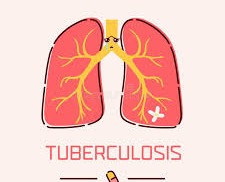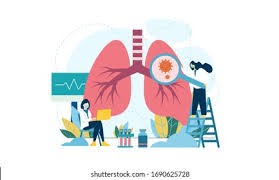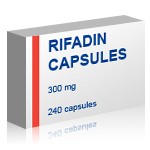Understanding and Treating Tuberculosis Effectively


What Is Tuberculosis and How Does It Affect the Body?
Tuberculosis is a contagious infection that mainly attacks the lungs but can also reach other vital organs such as the kidneys, spine, or brain. It spreads through the air when an infected person coughs or sneezes, releasing bacteria that can be inhaled by others. Many people live with the bacteria without symptoms, but the infection can become active later if the immune system weakens.
Main points:
- Tuberculosis spreads through tiny airborne droplets from infected individuals.
- It can stay inactive in the body for months or years before becoming active.
- The infection mostly affects the lungs but can reach other body areas.
This disease slowly reduces the body’s strength, making it essential to identify and treat it before it spreads further.
What Are the Common Symptoms of Tuberculosis?
Recognizing tuberculosis symptoms early is important to prevent severe complications and protect others from infection. Many early symptoms may appear similar to those of other respiratory illnesses, which often delays treatment. Therefore, paying attention to persistent changes in health is crucial.
Main points:
- A continuous cough lasting longer than three weeks.
- Chest pain or tightness during breathing or coughing.
- Night sweats, mild fever, and general tiredness.
- Sudden and unexplained weight loss or lack of appetite.
These signs should not be ignored, as tuberculosis can progress quietly but cause serious health damage over time.
Why Does Tuberculosis Occur and Who Is Most at Risk?
Understanding the causes and risk factors for tuberculosis helps in avoiding the infection and strengthening personal protection. The disease is more likely to spread in environments with limited air circulation and weak health systems. People with weakened immunity or malnutrition are especially vulnerable.
Main points:
- Crowded and poorly ventilated areas increase the spread of infection.
- Poor nutrition and weakened immunity make it easier for bacteria to grow.
- People with limited access to healthcare may face delayed treatment.
- Close contact with someone infected raises the risk of transmission.
Improving hygiene, nutrition, and access to healthcare helps reduce tuberculosis cases and protect communities.
How Can Tuberculosis Be Prevented?
Tuberculosis can be prevented through good hygiene, proper health practices, and regular medical care. Prevention efforts must focus on both personal and public health awareness, ensuring everyone understands how the disease spreads.
Main points:
- Keep rooms well-ventilated to allow air circulation.
- Cover your mouth when coughing or sneezing to stop germ spread.
- Encourage medical check-ups for anyone exposed to tuberculosis.
- Eat balanced meals to support immune strength and recovery.
Taking small steps every day can reduce infection risk and create a safer, healthier environment for everyone.
How Is Tuberculosis Diagnosed?
Early and accurate diagnosis is the key to controlling tuberculosis and preventing it from spreading to others. Healthcare professionals use several simple tests to detect the presence of bacteria and determine whether the infection is active or latent.
Main points:
- Chest X-rays show signs of infection or lung damage.
- Sputum tests can confirm the presence of tuberculosis bacteria.
- Blood tests detect active or inactive infections.
- A doctor’s review of medical history and symptoms supports diagnosis.
Once identified early, tuberculosis can be effectively managed with proper treatment and patient care.
What Are the Treatment Options for Tuberculosis?
Tuberculosis treatment usually lasts several months and requires taking different medicines together. Patience and consistency are vital because stopping treatment early allows the bacteria to return stronger. Regular medical supervision ensures the infection is completely cleared.
Main points:
- A combination of medicines is prescribed to kill bacteria.
- Completing the full course prevents the infection from coming back.
- Skipping doses may lead to drug resistance.
- Good rest, nutrition, and hydration help with recovery.
Following treatment fully gives the best chance for complete healing and prevents tuberculosis from spreading further.
How Rifadin (Rifampin) Helps in Treating Tuberculosis
Rifadin, also known as Rifampin, is one of the most important medicines used in treating tuberculosis. It works by blocking the bacteria from making essential substances they need to survive and multiply. This action reduces infection levels and helps the body heal.
Main points:
- Rifadin directly targets bacteria responsible for tuberculosis.
- It is usually combined with other medicines for full effectiveness.
- Taking it regularly helps the medicine work correctly.
- Patients often start to feel better after a few weeks of consistent use.
Rifadin helps the body regain strength and lowers the risk of the infection returning when used as prescribed.
Safe Use of Rifadin (Rifampin) and Patient Guidance
Safe and correct use of Rifadin ensures full recovery and helps prevent resistance to treatment. Patients should always stay in close contact with their healthcare provider while taking the medicine. Clear communication about any side effects or concerns makes the process safer and more effective.
Main points:
- Follow all medical instructions carefully for dosage and timing.
- Avoid stopping the medicine too early, even if symptoms improve.
- Inform your doctor about any strange reactions or color changes.
- Maintain a balanced diet and adequate hydration during treatment.
Responsible use of Rifadin leads to successful treatment and helps patients return to a healthy life free from tuberculosis.
Living Free from Tuberculosis
Tuberculosis is a serious yet curable disease when diagnosed and treated correctly. Awareness, commitment to full medical care, and consistent use of prescribed medicines like Rifadin make complete recovery possible. Every person can help stop the spread of tuberculosis by recognizing symptoms early, following preventive measures, and supporting community health programs.
Drug Description Sources: U.S. National Library of Medicine, Drugs.com, WebMD, Mayo Clinic, RxList, MedlinePlus, Healthline, MedicineNet, Cleveland Clinic, Johns Hopkins Medicine, NHS UK, Medical News Today, Everyday Health, Medscape.
Reviewed and Referenced By:
- Dr. Alan Carter, PharmD – Clinical Pharmacist, contributor to Drugs.com and Mayo Clinic on antibacterial therapy.
- Dr. Rebecca Lin, MD – Infectious disease specialist, reviewer for WebMD and Cleveland Clinic articles.
- Dr. Samuel Ortiz, PhD – Researcher in microbiology, contributor to U.S. National Library of Medicine and MedlinePlus publications.
- Dr. Karen White, PharmD – Pharmacology advisor for RxList and MedicineNet content reviews.
- Dr. Mark Thompson, MD – Pulmonologist and tuberculosis care expert, contributor to Johns Hopkins Medicine and Healthline.
Article Post: Editorial Team of RXShop.md
(Updated at Nov 1 / 2025)

